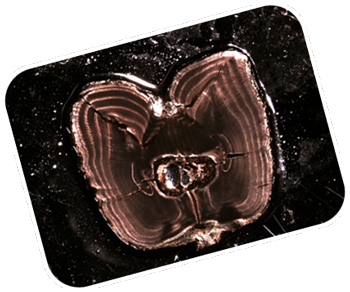
Research Interests

All of my research focuses on answering questions directly applicable to fisheries management, while also addressing basic ecological questions. The impetus for my research emerges from issues and concerns related to native fish conservation and sport fisheries management. Consequently, I frame my research questions and approaches in a manner that has relevance to the general scientific community and natural resource managers. Although I have interests in all aspects of applied fisheries ecology and management and have conducted research across a diversity of aquatic systems, I have several focal research areas.
Fish Assemblage Structure in Small Stream Systems
Understanding factors related to the occurrence and abundance of stream fishes is a central focus of both basic and applied ecology. One of my major research directions has been determining how abiotic habitat characteristics and biotic interactions regulate fish assemblage structure in stream systems. Because mechanisms influencing the distributions and abundance of stream fishes act across various spatial and temporal scales, I often use a variety of approaches to determine the magnitude and importance of multiple scales when addressing these research questions. In addition to my interests on the effects of multiple, often hierarchical scales, I am also interested in the interplay between abiotic habitat conditions and biotic interactions in lotic systems, particularly with regard to anthropogenic disturbances to stream habitat (e.g., water development, land use in the watershed) and the introduction of bioinvasive species. Although I have conducted several studies on factors influencing the occurrence of small stream species, I am especially interested in the application of principals and techniques commonly used to assess sport fishes (e.g., growth and mortality analyses) on stream fish populations.

Ecology of Large River Systems
Large rivers represent some of the most altered ecosystems in North America. Consequently, another of my primary research directions has focused on anthropogenic influences to native fishes in large-river systems. In particular, I am interested in the effects of habitat modification due to water development (e.g., impoundments, diversion structures), how these changes facilitate the introduction and naturalization of bioinvasive fishes, and how altered habitat conditions and biotic interactions work in synergy to influence native species in large rivers. In addition to issues related to native species conservation, I am also interested in the effects of habitat modification and exploitation (i.e., commercial and recreational harvest) on fish population dynamics in large rivers.
Fish Assemblages and Population Dynamics in Lake and Reservoir Systems
Similar to my research in lotic systems, my research in lake and reservoir systems focuses on the magnitude, importance, and interactions of abiotic and biotic conditions. I seek to take an integrative approach to my research on fishes in lentic systems by focusing on all aspects (i.e., growth, recruitment, and mortality) of their population dynamics and factors influencing the structure of fish assemblages. Consequently, my approach to answering questions related to the ecology of lakes and reservoirs is multifaceted, including the use of long-term, spatially-extensive data sets, field studies that focus on different ontogentic stages (i.e., larvae, juveniles, adults), experimental manipulations to elucidate mechanistic relationships, and ecological models to investigate factors influencing growth, recruitment, and mortality. Some of the most interesting and challenging aspects of conducting research on fishes in lakes and reservoirs, particularly reservoirs, are the dynamic nature of abiotic characteristics and the fact that many introduced and native species have little or no evolutionary history of co-occurrence. As such, I incorporate these concepts into my research whenever possible.
Management Tools

Another major research direction has focused on the application and development of tools and techniques used by fishery managers. One research focus has been on the use, application, and development of indices (e.g., size structure, condition, recruitment, mortality, growth) used to evaluate and monitor fish populations. In addition to these interests, I am also interested in and have developed novel techniques for sampling and assessing populations that can be used to address issues and concerns related to fisheries management and conservation.
Synergism among Major Research Directions
Although I have interests and have conducted research over a diverse array of species and ecosystems, several overall themes in my research are apparent. My research attempts to account for multiple factors (i.e., abiotic and biotic characteristics) and their interactive effects. Regardless of the species or system, I strive to take an integrative approach that utilizes information from a variety of disciplines and techniques (e.g., field studies, experimental manipulation, ecological modeling) to provide meaningful insight and answers to research questions. Basic ecological ideas can provide a foundation and conceptual framework for research; therefore, I strive to integrate basic ecological concepts with applied research questions. Such studies appeal to the general scientific community and contribute to our understanding of basic ecological principles, while at the same time answer questions that have practical utility. Lastly, nearly all of my research is directed at questions that are meaningful to natural resource managers, regardless of whether the focus is on native species conservation or sport fisheries management.